“My Traveling and Research into Black History Blog Summer ‘23” By Lisa Merrill
This summer my research took me across continents and back in time as I explored crucial locations and occasions of Black history and the diaspora in England, Scotland, and Ghana.
It started in Bamber Bridge, Lancashire, England. There exactly 80 years ago during World War 2, when the US military was segregated, a troop of Black G. I.s were sent to this small town, Bamber Bridge. There they were welcomed by the locals, spent time in a 16th century pub, and all went well until a white US troop was stationed nearby. The resulting violent altercation, referred to by some as the Battle of Bamber Bridge, resulted in one Black G. I. being killed and eight others wounded. You can read about this event here: https://www.npr.org/2023/06/21/1183045605/black-army-soldiers-england-wwii-battle
On June 23 and 24, 80 years exactly, I was at Bamber Bridge for the conference at the University of Central Lancashire and in the streets of this town for the commemoration.
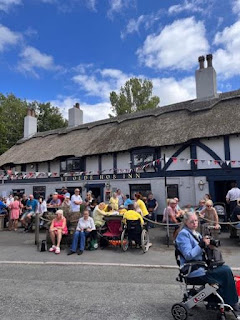

Here I am with Clinton Smith of the Preston Black History group and Aaron Snipe of the U.S. Embassy in London.
Professor Alan Rice director and founder of the Institute for Black Atlantic Research and MIDEX, organized the conference and commemoration with Mr. Smith, and the townspeople turned out, including a 106-year-old woman who saw the violence unfold 80 years ago.
I was glad that townspeople honored Pvt Crossland in the street very where he was killed on that day 80 years ago.
Next, I took the train north to Scotland, and further back in time, to the mid 1800s in search of traces of Black and Native American sculptor Edmonia Lewis (c1844-1907) and Frederick Douglass who spent time there in 1846, giving speeches about the horrors of enslavement.
First, I traveled to Mount Stuart, on the Isle of Bute, home of the Marquess of Bute. I have long been interested in Edmonia Lewis, a remarkable artist who left the U.S. in 1866 to become an expatriate, living most of her life in Italy where she was associated with a group of female artists led by actress Charlotte Cushman whose biography I wrote two decades ago. [see Lisa Merrill, When Romeo was a Woman, University of Michigan Press 2000]. Cushman was one of Lewis's major patrons, but so was the Marquess of Bute, who traveled to Rome in 1869 and commissioned Lewis to create several pieces of religious art for him.
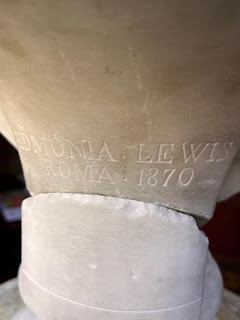
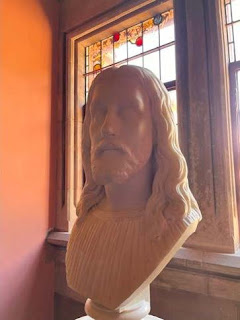
Lewis's bust of Jesus was recently located in a storeroom at Mount Stuart, where it had been misplaced for almost a hundred years. I went there with my colleague and friend Dr. Anjuliet Woodruffe to read the Marquess' letters and travel journal in the archive to try to determine when he first encountered Lewis and her work.
This research is part of a larger archival project Dr. Woodruffe and I are presenting at the University of Cincinnati in October.
From the Isle of Bute, I traveled back on the Scottish mainland to Edinburgh, following some of the steps Frederick Douglass took in 1846. There I was happy to see a mural honoring Douglass on the street where he stayed in Scotland and went to locations where he spoke and visited.
After Scotland I headed down to London and saw the wonderful artwork of Isaac Julian at the Tate, Britain. Julien's study of Douglass's Lessons of the Hour will be a feature in my course on Art and Literature of the Diaspora for Honors College this Fall.
But as amazing as all of this was, the most truly memorable and life-changing aspect of my research was my travel to Accra, Ghana, where I gave a talk at the International Federation for Theatre Research Conference.
The warm welcome in Accra was filled with music and celebration. And for performance and cultural historians like me, the monuments honoring Ghana's Kwame Nkrumah and W. E. B. DuBois who spent his final years in Ghana were so moving.
But traveling back in time, to the site of hundreds of years of captivity, torture, enslavement, to Elmina, the departure site for the Middle Passage was unspeakably somber and heartbreaking but so important to bear witness to these atrocities. Built in 1482 by Portuguese slave traders, this horrific site of enslavement by Portuguese, Dutch, and British slave traders is chilling. I will be processing the unspeakable experience of being there for a long time; more than I can report here. But the thousands of souls of ancestors who were tortured and imprisoned there in Elmina in the years, decades, centuries and were forced to depart Africa through the "door of no return" or died on the Middle Passage must be acknowledged and honored. Through this trip and this International Federation for Theatre Research conference their lives, histories, narratives and those of their descendants were recounted in music, theatre, arts, and literature. Their stories must be told.
Lisa Merrill, Ph.D. (she, her) is Professor, of Performance Studies and Rhetoric, Department of Writing Studies and Rhetoric teaching courses and publishing research about performance studies, critical race and cultural studies, and women's and LGBTQ history in a range of cultural artifacts, artworks, and performances. Dr. Merrill publishes widely in the US and UK, where she has presented her research at the International Museum for the Study of Slavery, Liverpool, England, and the Institute for Black Atlantic Research, UCLAN, UK. At Hofstra she regularly stages re-enactments of Black historical figures as part of Performing History.




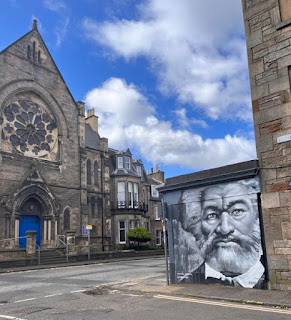
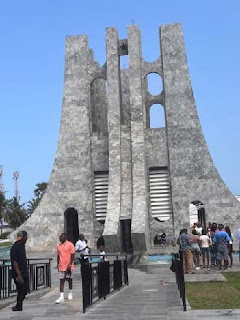
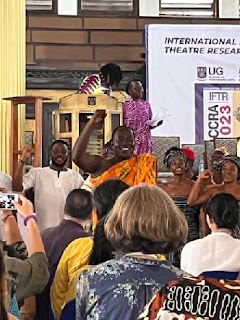

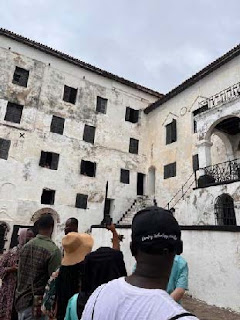
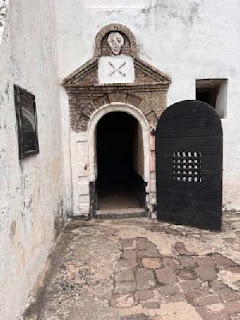
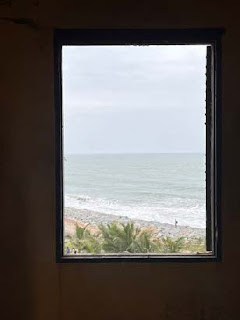


Comments
Post a Comment